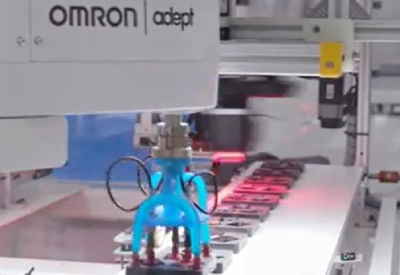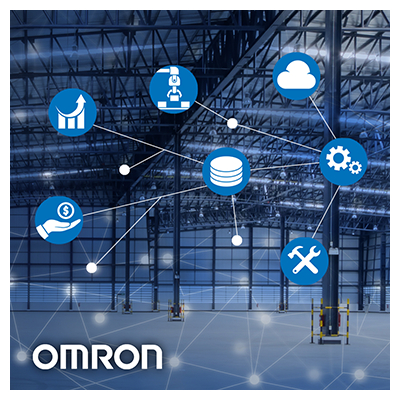Traditional Factories Have Data Needs Too by Omron

May 19, 2022



May 19, 2022


January 30, 2023 Rotary encoders are electromechanical devices that provide feedback on the rotational movement of an axle or shaft. Comprising two parts – a reader and a scale – they typically accomplish this task either by either “absolute encoding” or “incremental encoding”: Absolute encoders measure the precise angular position of the reader relative to…
July 31, 2024 With globalized production increasing and the shift towards EV manufacturing, automotive supply chains have become more complex and increasing the need for bar codes to meet a common standard. See how OMRON’s innovative barcode verification systems can confirm compliance to ISO and other standards, helping prevent unreadable bar codes maintaining supply chain…
January 8, 2024 Collaborative robots, or cobots, have revolutionized the manufacturing industry by working alongside humans to increase productivity and efficiency. However, with the growing prevalence of cobots, it is crucial to prioritize safety and conduct thorough testing and validation to ensure safe operations. In this blog post, Omron explores the importance of force and…
Dillon Kong and Paxton Coghlin Will Compete at 2023 Provincial Skills Ontario Competition March 10, 2023 By Krystie Johnston On February 17, students competed at the Humber Skills Varsity Qualifying Competition in the Mechatronics category at the Skills Mechatronics Room, located on the second floor of the Barrett Centre for Technology Innovation. The event lasted…
Humber students move on to Skills Canada National Competition being held May 25 and 26 in Manitoba May 23, 2023 By Krystie Johnston Skills Ontario recently held the 2023 Skills Ontario Competition in person at the Toronto Congress Centre. It was the first in-person event after three years of it being held virtually during the…
September 3, 2024 Using Eplan eBuild in the cloud, schematics can now be created from an internet browser One of these is the cloud-based software eBuild, with which users can generate their projects with a simple mouse click. The new Version 2025 is now available – with significant advantages in ease of use, operation, and…
April 2, 2025 Discover the future of AI in inspection for specialized tasks to versatile solutions. The landscape of AI and vision technology in inspection and quality control is set to transform with the development of more generalized algorithms. These advanced systems will be capable of tackling a wide range of inspection challenges, moving away… Read More…
April 2, 2025 If you’ve walked the floor of a modern plant lately, you’ve likely noticed a shift—machines are smarter, lines are faster, and safety systems are more integrated than ever. At the heart of this evolution sits an unsung hero: the safety relay. Once seen as a check-the-box component for regulatory compliance, safety relays are… Read More…

In today’s fast-paced manufacturing and logistics industries, the need for efficient and flexible material movement solutions has never been greater. Traditional methods like conveyor systems, forklifts, and manual pushcarts have served us well, but they come with limitations.
That’s why Omron is thrilled to announce the launch of their game-changing MD Series of Autonomous Mobile Robots (AMRs). Read more
March 27, 2025 Safety Wheel Drive is an innovative all-in-one solution combining a wheel, gearbox, motor, safety encoder, and safety drive to streamline the integration of powered motion into any type of industrial mobile platform. IDEC Corporation is expanding its ez-Wheel® product family with the new SWD® Safety Wheel Drive. The increasing demand for automated… Read More…
March 27, 2025 Endress+Hauser is launching the next generation of Dosimag and Dosimass, its OEM specific flowmeters for filling applications, which now can be ordered with IO-Link connectivity – a world first for this class of liquid measurement instrument. This new lineup provides best-in-class filling and batching performance, with high precision and repeatability and… Read More…